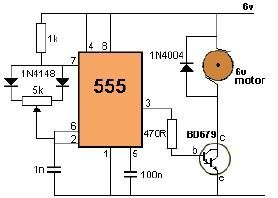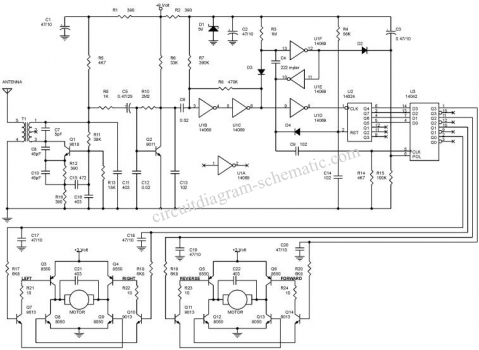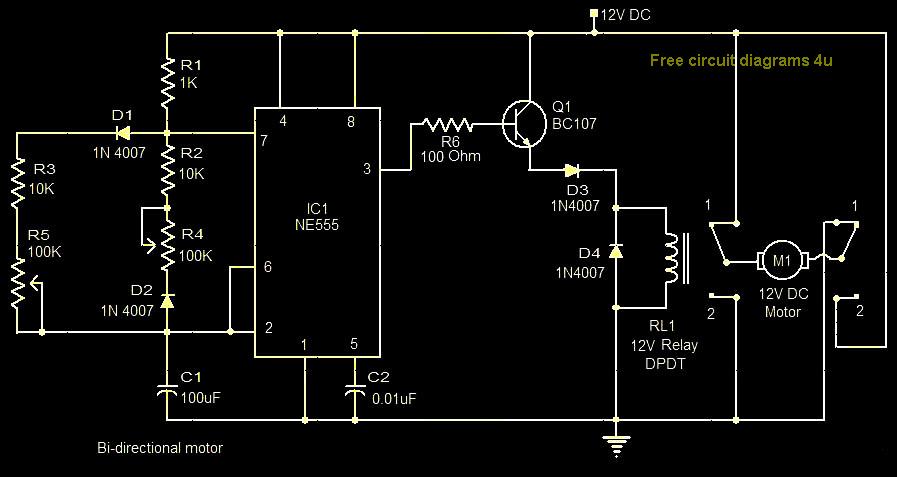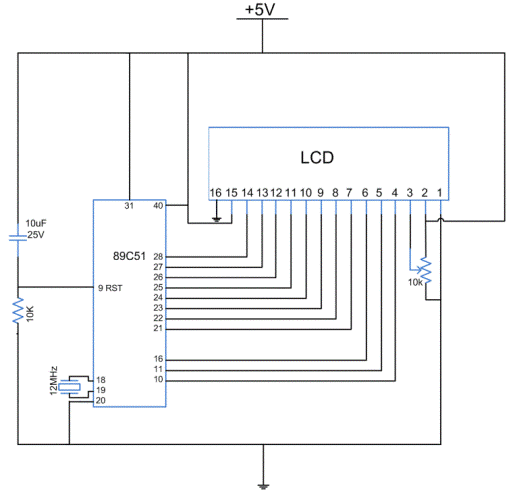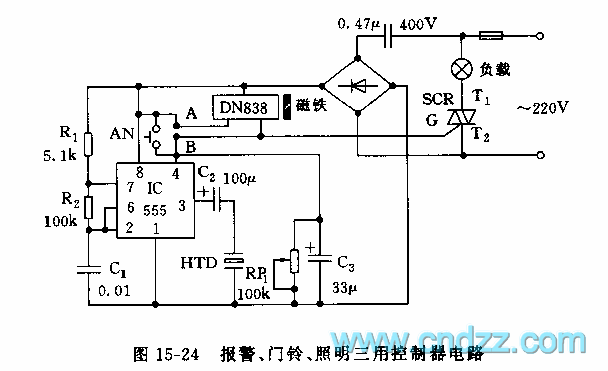
motor control
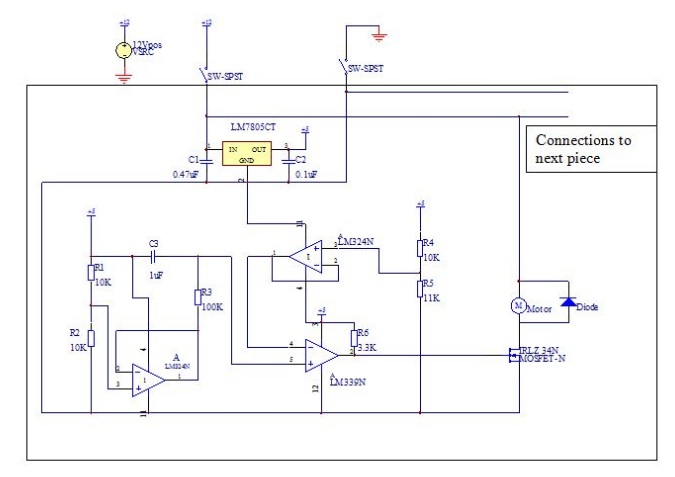
THE CUBE is a three-dimensional jigsaw puzzle that features a unique mechanism where a puzzle piece vibrates for approximately one second when it is correctly placed in the puzzle. This functionality is achieved through an electrical design that completes a circuit, thereby powering a vibration motor whenever a puzzle piece is positioned correctly on its base. The project aims to enhance the educational process of developing spatial skills by providing positive feedback and encouragement. Qualitative results indicated that the vibration feedback made the puzzle experience more enjoyable; during the event, the table showcasing "THE CUBE" attracted continuous visitors, and it was awarded "Most Creative". Upon completion, THE CUBE resembles a specific design. In the final haptics project, the focus was on creating a haptic device that addresses a fundamental skill learned earlier than high school. The goal was to influence the development of spatial awareness in children aged seven to ten. Research into previous studies related to spatial learning, three-dimensional puzzles, and vibrotactile feedback informed the design and objectives of this project.
Summary: One referenced study describes a set of cubes that, when interlocked, displayed their position and orientation on a computer monitor. Children, both with and without Developmental Coordination Disorder (DCD), engaged in challenging visual games using these blocks, resulting in measurable improvements in their spatial intelligence. Although this paper was encountered post-project completion, it provided valuable insights for future endeavors. The experimental procedure aligns with potential testing methods for the target age group (7-10 years). By incorporating specific challenges and a modular design, spatial learning could become more quantifiable.
Another study compared spatial performance using vibrotactile cues versus verbal cues, where participants commanded their right arm to translate and rotate to various orientations. Results indicated that vibrotactile feedback was more effective for rotational commands, while verbal feedback excelled with translational tasks. This finding influenced the decision to develop a three-dimensional puzzle instead of a two-dimensional one, as it would enhance the impact of the vibrotactile feedback mechanism. The study also noted that as tasks increased in difficulty, younger children exhibited more confusion and errors, confirming that the development of complex spatial awareness occurs between the ages of five and ten, which aligns with the target demographic for the puzzle.
Another referenced paper explored the spatial knowledge gained by physiotherapy students through solving virtual three-dimensional puzzles related to human anatomy. The effectiveness of these puzzles was evaluated with pre- and post-assessments, including questions about anatomical facts, a spatial intelligence test, and discussions on confidence and usability regarding the puzzles.
The insights gained from these studies underscore the importance of vibrotactile feedback and the targeted age group for "THE CUBE", reinforcing its potential effectiveness in enhancing spatial awareness and skills in children. The integration of haptic feedback in a three-dimensional puzzle format aims to create an engaging learning tool that supports spatial skill development in early childhood education.THE CUBE is a 3D jigsaw puzzle, with the added feature that a puzzle piece vibrates for approximately a second when it is placed in the correct place in the puzzle. We accomplished this by building an electrical design such that a circuit delivering power to a vibration motor was completed each time a puzzle piece was correctly placed onto a ba
se. We hope that our project will reach the educational goal of improving the process of learning spatial skills by providing positive feedback and encouragement. Our qualitative results indicated that the vibration feedback did make the puzzle experience more fun: our table was occupied with visitors for the duration of the event, and "THE CUBE" was voted "Most Creative".
When completed, THE CUBE looks like the picture to the right: In our final haptics project, we aimed to build a haptic device that targeted a more fundamental skill in life than something learned in a high school. We began considering concepts learned at a younger age than high school to meet this interest and came to the conclusion that we wanted to influence learning of spatial awareness in children.
To explore the effects of haptic feedback on the experience of developing spatial awareness in children aged seven through ten, we came up with THE CUBE . Below is a description of our research into previous work as it relates to several aspects of our project- spatial learning, 3D puzzles, and vibrotactile feedback.
Each of these sources gave us some sort of insight and/or molded our approach. Summary: This paper describes a set of cubes that, when interlocked, rendered their position and orientation onto a computer monitor. Children with and without Developmental Coordination Disorder (DCD) played challenging visual games with these blocks, and their spatial intelligence measurably improved.
Significance to our project: Although we came across this paper after we completed the project, it was still quite useful for future work purposes. This experimental procedure is similar to one we could implement if we were to test our puzzle on our target age group (7-10 years).
With specific challenges and a more modular design, we could make spatial learning even more measureable. Summary: This paper describes an experiment that compared spatial performance with vibrotactile cues to that with verbal cues.
This was done by commanding the right arm to translate and rotate to different orientations. The result (concluded from the number of errors made in each case) was that vibrotactile feedback was more effective with rotational commands, and verbal feedback was more effective for translational feedback. Significance to our project: We decided to go with a 3D puzzle instead of a planar one because of this paper.
If pieces must be oriented correctly in 3D space, it will maximize the effect of vibrotactile feedback features of the puzzle. The results found that as the tests became increasingly more difficult, the younger children got more and more lost and made more errors.
The main result of the paper is that the development period for complex spatial awareness and development was confirmed at the ages between 5 and 10, as previously suspected. Significance to our project: This could point us to the target age group of our 3D puzzle for the sake of spatial skill development.
If we market this toward early elementary school children, it will be most effective according to this study. Summary: This paper talks about an experiment to test the spatial knowledge gained by physiotherapy students from solving virtual 3D puzzles related to human anatomy.
The effectiveness of the puzzles was evaluated before and after the puzzles by having the students: 1) answer questions about anatomical facts 2) take a spatial intelligence test, 3) talk about their confidence in that anatomical knowledge, and 4) talk about the usability and difficulty with the puzzles. Th 🔗 External reference
Summary: One referenced study describes a set of cubes that, when interlocked, displayed their position and orientation on a computer monitor. Children, both with and without Developmental Coordination Disorder (DCD), engaged in challenging visual games using these blocks, resulting in measurable improvements in their spatial intelligence. Although this paper was encountered post-project completion, it provided valuable insights for future endeavors. The experimental procedure aligns with potential testing methods for the target age group (7-10 years). By incorporating specific challenges and a modular design, spatial learning could become more quantifiable.
Another study compared spatial performance using vibrotactile cues versus verbal cues, where participants commanded their right arm to translate and rotate to various orientations. Results indicated that vibrotactile feedback was more effective for rotational commands, while verbal feedback excelled with translational tasks. This finding influenced the decision to develop a three-dimensional puzzle instead of a two-dimensional one, as it would enhance the impact of the vibrotactile feedback mechanism. The study also noted that as tasks increased in difficulty, younger children exhibited more confusion and errors, confirming that the development of complex spatial awareness occurs between the ages of five and ten, which aligns with the target demographic for the puzzle.
Another referenced paper explored the spatial knowledge gained by physiotherapy students through solving virtual three-dimensional puzzles related to human anatomy. The effectiveness of these puzzles was evaluated with pre- and post-assessments, including questions about anatomical facts, a spatial intelligence test, and discussions on confidence and usability regarding the puzzles.
The insights gained from these studies underscore the importance of vibrotactile feedback and the targeted age group for "THE CUBE", reinforcing its potential effectiveness in enhancing spatial awareness and skills in children. The integration of haptic feedback in a three-dimensional puzzle format aims to create an engaging learning tool that supports spatial skill development in early childhood education.THE CUBE is a 3D jigsaw puzzle, with the added feature that a puzzle piece vibrates for approximately a second when it is placed in the correct place in the puzzle. We accomplished this by building an electrical design such that a circuit delivering power to a vibration motor was completed each time a puzzle piece was correctly placed onto a ba
se. We hope that our project will reach the educational goal of improving the process of learning spatial skills by providing positive feedback and encouragement. Our qualitative results indicated that the vibration feedback did make the puzzle experience more fun: our table was occupied with visitors for the duration of the event, and "THE CUBE" was voted "Most Creative".
When completed, THE CUBE looks like the picture to the right: In our final haptics project, we aimed to build a haptic device that targeted a more fundamental skill in life than something learned in a high school. We began considering concepts learned at a younger age than high school to meet this interest and came to the conclusion that we wanted to influence learning of spatial awareness in children.
To explore the effects of haptic feedback on the experience of developing spatial awareness in children aged seven through ten, we came up with THE CUBE . Below is a description of our research into previous work as it relates to several aspects of our project- spatial learning, 3D puzzles, and vibrotactile feedback.
Each of these sources gave us some sort of insight and/or molded our approach. Summary: This paper describes a set of cubes that, when interlocked, rendered their position and orientation onto a computer monitor. Children with and without Developmental Coordination Disorder (DCD) played challenging visual games with these blocks, and their spatial intelligence measurably improved.
Significance to our project: Although we came across this paper after we completed the project, it was still quite useful for future work purposes. This experimental procedure is similar to one we could implement if we were to test our puzzle on our target age group (7-10 years).
With specific challenges and a more modular design, we could make spatial learning even more measureable. Summary: This paper describes an experiment that compared spatial performance with vibrotactile cues to that with verbal cues.
This was done by commanding the right arm to translate and rotate to different orientations. The result (concluded from the number of errors made in each case) was that vibrotactile feedback was more effective with rotational commands, and verbal feedback was more effective for translational feedback. Significance to our project: We decided to go with a 3D puzzle instead of a planar one because of this paper.
If pieces must be oriented correctly in 3D space, it will maximize the effect of vibrotactile feedback features of the puzzle. The results found that as the tests became increasingly more difficult, the younger children got more and more lost and made more errors.
The main result of the paper is that the development period for complex spatial awareness and development was confirmed at the ages between 5 and 10, as previously suspected. Significance to our project: This could point us to the target age group of our 3D puzzle for the sake of spatial skill development.
If we market this toward early elementary school children, it will be most effective according to this study. Summary: This paper talks about an experiment to test the spatial knowledge gained by physiotherapy students from solving virtual 3D puzzles related to human anatomy.
The effectiveness of the puzzles was evaluated before and after the puzzles by having the students: 1) answer questions about anatomical facts 2) take a spatial intelligence test, 3) talk about their confidence in that anatomical knowledge, and 4) talk about the usability and difficulty with the puzzles. Th 🔗 External reference
Warning: include(partials/cookie-banner.php): Failed to open stream: Permission denied in /var/www/html/nextgr/view-circuit.php on line 713
Warning: include(): Failed opening 'partials/cookie-banner.php' for inclusion (include_path='.:/usr/share/php') in /var/www/html/nextgr/view-circuit.php on line 713
